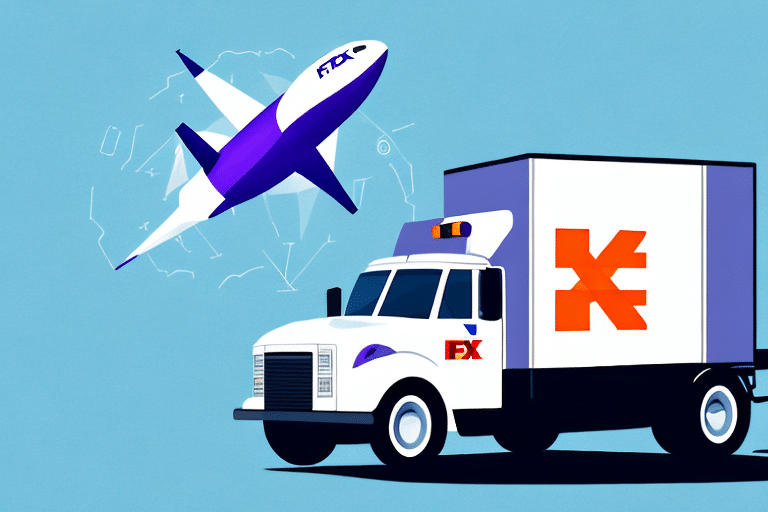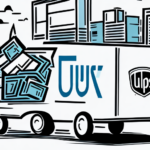Setting Up Auto Alerts for FedEx Shipments with FedEx Ship Manager
Managing shipments efficiently is crucial for businesses aiming to maintain customer satisfaction and streamline operations. FedEx Ship Manager offers a robust auto alerts feature that enables you to stay informed about your shipments' status without manual tracking. This guide delves into the advantages of using auto alerts, provides actionable tips for optimizing your shipping process, and offers a comprehensive, step-by-step approach to setting up and customizing your alerts.
Understanding FedEx Ship Manager and Auto Alerts
What is FedEx Ship Manager?
FedEx Ship Manager is an online tool designed to simplify the shipping process. It allows users to create shipments, print labels, schedule pickups, and manage tracking information all in one place. The auto alerts feature within Ship Manager enhances this functionality by providing real-time notifications about your shipments.
How Do Auto Alerts Work?
Auto alerts use automated notifications to inform you about key events in your shipment’s lifecycle, such as pickup, in transit updates, delivery confirmation, and any exceptions or delays. These alerts can be received via email, text message, or through the FedEx mobile app, ensuring you have timely information at your fingertips.
Benefits of Using Auto Alerts for Your FedEx Shipments
Enhanced Visibility and Control
Auto alerts provide comprehensive visibility into your shipments' status, allowing you to monitor progress without constant manual checks. This real-time tracking ensures that you can quickly respond to any issues that may arise, minimizing delays and maintaining smooth operations.
Improved Customer Satisfaction
By keeping both your business and your customers informed about shipment status, you enhance transparency and trust. Customers appreciate timely updates, which can lead to increased satisfaction and repeat business.
Operational Efficiency
Automating shipment notifications reduces the time spent on manual tracking, allowing your team to focus on more strategic tasks. This efficiency can lead to cost savings and improved overall productivity.
How Automation Enhances Shipping Efficiency
Reduction of Human Error
Manual tracking and data entry are prone to errors. Automation ensures that all shipment data is accurately tracked and recorded, reducing the likelihood of mistakes that could lead to delays or lost shipments.
Data-Driven Decision Making
Automated alerts generate valuable data on your shipping operations. Analyzing this data can provide insights into patterns and trends, helping you make informed decisions to optimize your shipping strategy.
Scalability
As your business grows, managing an increasing number of shipments manually becomes untenable. Automation scales with your business, allowing you to handle more shipments without a proportional increase in workload.
Streamlining Your Shipping Process with Auto Alerts
Optimizing Shipping Rates
Researching and negotiating with different carriers can help you secure the most cost-effective shipping rates. By automating alerts, you can focus on strategic negotiations without being bogged down by daily tracking tasks.
Effective Customer Communication
Implementing automated notifications keeps your customers informed about their shipments, reducing the need for customer service inquiries and enhancing the overall customer experience.
Proactive Issue Resolution
Auto alerts notify you immediately of any exceptions or delays, allowing you to take swift action to resolve issues before they escalate, thereby maintaining your reputation and reliability.
Step-by-Step Guide to Setting Up Auto Alerts in FedEx Ship Manager
1. Log In to FedEx Ship Manager
Access your FedEx Ship Manager account by visiting the FedEx Ship Manager portal and entering your login credentials.
2. Navigate to Auto Alerts Settings
Once logged in, go to the settings menu and select the "Auto Alerts" option to begin configuring your notifications.
3. Select Shipment Stages for Alerts
Choose the specific stages of your shipment where you want to receive alerts, such as pickup, transit updates, exceptions, and delivery confirmation.
4. Configure Notification Preferences
Decide how you want to receive your alerts—whether via email, text message, or through the FedEx mobile app. You can also set up alerts for different types of shipments based on priority or destination.
5. Save and Activate Your Settings
After configuring your preferences, save the settings to activate your auto alerts. Ensure that your contact information is accurate to receive timely notifications.
Customizing Auto Alerts for Maximum Efficiency
Setting Escalation Rules
Implementing escalation rules allows you to receive alerts at varying levels of urgency. For instance, you can set immediate alerts for delays in high-priority shipments while receiving daily summaries for shipments on schedule.
Integrating with Other Systems
To further enhance efficiency, integrate your auto alerts with other shipping management systems or CRM tools. This integration can centralize your operations and provide a unified view of your shipping activities.
Personalizing Alert Content
Customize the content of your alerts to include relevant information such as shipment ID, expected delivery time, and any special instructions. Personalized alerts ensure you have all necessary details to manage your shipments effectively.
Troubleshooting Common Issues with Auto Alerts
Issue: Not Receiving Alerts
Solution: Verify that your alert settings are correctly configured and that your contact information is up-to-date. Check spam folders for email alerts and ensure your phone settings allow text messages from FedEx.
Issue: Delayed Alerts
Solution: Ensure a stable internet connection and verify that there are no outages affecting your email or SMS provider. Contact FedEx support if the issue persists.
Issue: Incorrect Alert Information
Solution: Double-check your shipment details in FedEx Ship Manager and update any incorrect information. If the problem continues, reach out to FedEx customer support for assistance.
Managing Multiple Shipments with Auto Alerts
Organizing Alerts by Shipment Type
Differentiate alerts based on shipment type, priority, or destination to manage multiple shipments efficiently. This organization helps in prioritizing tasks and addressing critical shipments promptly.
Using a Centralized Dashboard
Leverage FedEx Ship Manager's dashboard to monitor all your shipments in one place. A centralized view allows for easy tracking and management of multiple shipments simultaneously.
Scheduling Regular Reviews
Set up regular intervals to review alert summaries and shipment statuses. Scheduled reviews ensure that no shipment goes unnoticed and that any issues are addressed in a timely manner.
Integrating Other Shipping Services with FedEx Ship Manager
Packaging Services
If your business ships fragile or specialized items, integrating packaging services can enhance the safety and security of your shipments. Consider partnering with providers that offer tailored packaging solutions.
Shipping Management Software
For businesses with high shipping volumes, integrating shipping management software can streamline operations across multiple carriers, including FedEx. Tools like ShipStation or Flow Solutions offer comprehensive management and analytics features.
Customer Relationship Management (CRM) Systems
Integrating auto alerts with your CRM system can provide a seamless flow of information between your shipping operations and customer management, enhancing overall business efficiency.
Conclusion
Utilizing auto alerts in FedEx Ship Manager can significantly enhance your shipping operations by providing real-time visibility, improving customer satisfaction, and increasing operational efficiency. By following the steps outlined in this guide and customizing your alert settings to fit your business needs, you can ensure that your shipments are managed effectively and that you stay informed every step of the way. For more detailed information, visit the FedEx Ship Manager page.






















